The Last Days of Black Isle Studios
The crucible that defined some of the best RPG designers ever.
This article first appeared on USgamer, a partner publication of VG247. Some content, such as this article, has been migrated to VG247 for posterity after USgamer's closure - but it has not been edited or further vetted by the VG247 team.
Feargus Urquhart remembers the moment that he knew that it was time to leave Black Isle Studios—the team he had founded a little more than five years before it was under Interplay.
Interplay had been struggling with debt and other issues for years before Urquhart finally decided to leave the studio he named for a region of Scotland, his ancestral homeland. But he had nevertheless held on all the way through 2003, if only out of the vain hope that they could finally finish Fallout 3.
Interplay lost $20 million in 2003, but Urquhart knew that it was over well before that.
"For me, I was very aware of what was going on at Interplay in general, and I tried to share that as much as I could with everyone in Black Isle," Urquhart remembers. "The point where I felt that Black Isle was not going to get the support it needed from Interplay anymore was when Interplay lost the [Dungeons & Dragons] license. Interplay could have figured out how to keep it, but it was a lower priority. This meant a game that people had been working on for two years had to be scrapped. After that happened, it felt to me like the writing was on the wall and both Black Isle and Interplay itself were probably not going to be around much longer.
That summer, Urquhart wound up departing the division he had helped to create after a seven year stint. And then the clock started ticking.
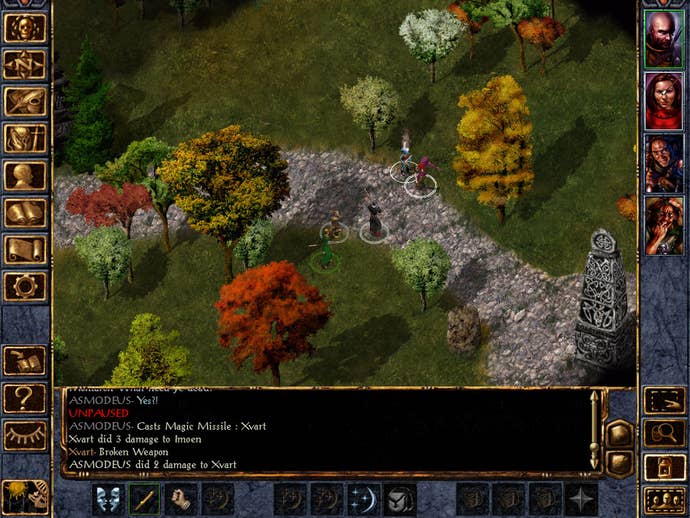
Today, Urquhart and many other Black Isle alums are at Obsidian, an RPG studio that has managed to forge its own legacy. But Black Isle is still there, hovering in the background. The console version of Pillars of Eternity, which landed earlier this week, is a spiritual successor to Baldur's Gate–a Black Isle staple. Many of Obsidian's fans go all the way back to Black Isle.
While relatively short-lived, Black Isle was a crucible that wound up binding together a team of highly talented creatives together through their careers. To understand what Black Isle meant, consider what Interplay founder Brian Fargo told Gamepressure years after the studio's closure. "At the time, if I had had such an opportunity, I would have fired everyone in the company except for Black Isle Studios and kept 40 people–and everything would still go on," said Fargo. "I would rebuild Interplay from there. But nobody would allow me to do that."
Black Isle inspires such feelings in part because its rise was so meteoric and because its pedigree was so undeniable. The very name conjures images of Tolkien-esque battles against orcs in foggy lowlands and dread swamps: perfect for a studio that would go on to build its name on great RPGs. It was an initiative formed within Interplay by Brian Fargo, the man who had designed The Bard's Tale and other classic RPGs, and was ultimately defined by two properties: Fallout and Dungeons & Dragons. Under these umbrellas, Black Isle Studios produced some of the most loved RPGs of all time, including Fallout 2 and Planescape Torment.
Their secret was their commitment to open-ended design and storytelling. It spoke to people who found traditional design boring, including the now-legendary designer J.E. Sawyer, who has worked on many of Black Isle Studios' and Obsidian's best games.

Sawyer vividly remembers playing Fallout in college before eventually joining Black Isle. Fallout was still technically an Interplay series back then, but the seeds that would define Black Isle were there. "I went in and I killed everything. I get the evil ending and I'm like, 'Wow, that's so cool. The game just lets me just lay waste to all these things,'" Sawyer remembers. "The more I looked at Fallout, the more I realized that the structure of it allowed me to go straight from Vault 13 to the Necropolis. You can do that. You would never do that on your first playthrough because you don't even know the Necropolis exists, but the game's structure actually allows you to do that and you can get the water chip very quickly."
Not long after, Sawyer joined the newly-formed Black Isle, which was tasked with making Fallout's sequel. The team he joined was extremely young, he remembers, which gave it a particular energy. Many were just getting started in the games industry and had big ideas about what they wanted to create. Both Sawyer and Chris Avellone got their start at Black Isle, and the small size of the studio meant that they were quickly given a lot of responsibility.
From the start, the culture was chaotic and often disorganized. The studio frequently had to rely on tech from other studios, most notably BioWare's Infinity Engine. The Icewind Dale team was composed almost entirely of junior designers.
But youth and ambition translated into energy. Practically everyone at Black Isle was a workaholic. "I remember people loved working on games. Maybe not every single person but overall the feeling was that people wanted to work hard," Sawyer says. "We never had required overtime but people were there all the time. Not that everyone was exactly like me, but we all really just wanted to make cool games, and we were in our 20s."
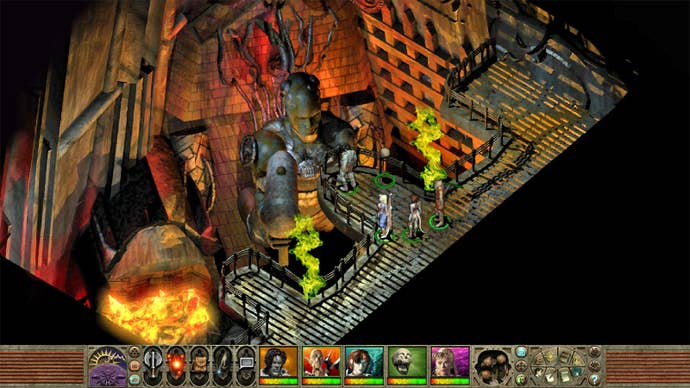
"It was a little more stressful than Obsidian in a lot of ways. There were more personality problems to manage, I think in part because there were so many us who were very young and inexperienced and we were just brats and professionalism was not a thing that we really understood," he continues. "If we got into arguments, they could just be big, stupid arguments. For the most part, though, we got along on stuff."
Avellone, now working on Divinity Original Sin 2, remembers too. "It was disorganized, and often had to rely on other companies’ tech–notably BioWare’s Infinity Engine, which arguably kept the majority of our projects running, since Black Isle couldn’t seem to build an engine of its own," says Avellone. "We also had to keep producing Infinity Engine games like Icewind Dale that could be done faster and with less RPG content again and again with increasingly short time frames."
Fargo agrees, "I think their biggest accomplishment was producing some of the finest RPGs of the 90's under difficult conditions. We were never financed like the big boys at Interplay and we were forced to be scrappy and produce games with far less resources than most."
The need to keep churning out games, as well as the departure of several experienced developers following the conclusion of Fallout 2, brought with it sometimes brutal pressures. Still, Black Isle won awards and critical acclaim. It was named IGN's RPG Studio of the Year in both 1998 and 1999. Though times were changing rapidly, starting with the rise of console and the decline of traditional PC gaming.
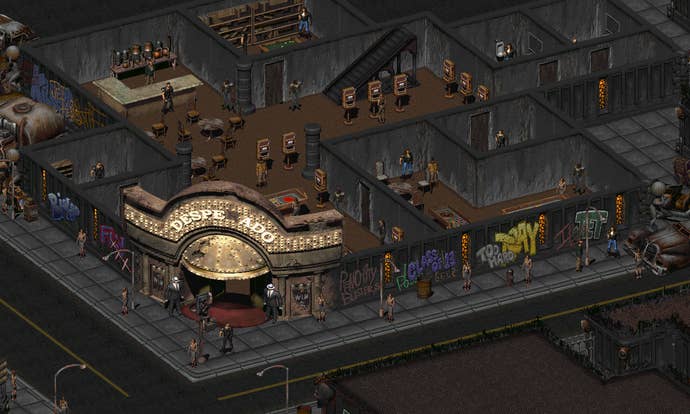
Within a year or two of Black Isle's creation, Interplay entered a period that Fargo later called "tough and not very fun." Interplay had been around for more than 15 years by that point, by then times were changing. Games were becoming more expensive to create, and absent MMORPGs, PC gaming as a whole was on a downward slope that wouldn't be reversed until roughly 2011. Interplay's games were often critically acclaimed, but high profile busts like Star Trek: Secret of Vulcan Fury (canceled) and Freespace 2 (a beloved flop) put the studio in dire straits.
Black Isle itself was doing fine, but struggles in other departments put more and more pressure on the group to make up the difference. Even Black Isle was not immune to Interplay's turmoil. Difficulties with Torn, an RPG that was to have used the LithTech engine, resulted in its cancellation in July 2001. For the first time, Black Isle experienced layoffs.
Sawyer remembers the day before the layoffs hit. "They actually brought me in the day before the layoffs and they said, 'Here's what happening. Tomorrow we're going to cancel Torn, we're going to layoff a handful of people, and we're going to start developing Icewind Dale II,'" says Sawyer. "Though Feargus will dispute this, at the time he said, 'We need to develop it in four months. What do you think?'"
"I said, 'No way it's ever going to happen. It's never ever, ever going to happen.' They're sort of like, 'Well, we're under the gun. Interplay is in a lot of trouble.'"
The management eventually got their way.
Sawyer left that office and began work on Icewind Dale II shortly after the layoffs, writing the story and the major characters in just 48 hours. He remembers the arguments that resulted from the intense pressure they were under, "It was really rough. I think that Icewind Dale II was the beginning of hard times from my perspective," says Sawyer. "Torn got canceled, people got laid off, and that was the beginning of everyone really stressing and thinking, 'I don't know if this is going to work out.' We had people leaving because either they were really fed up or stressed out or they just were going, 'I don't know if this is going to really pan out in the long run.'"
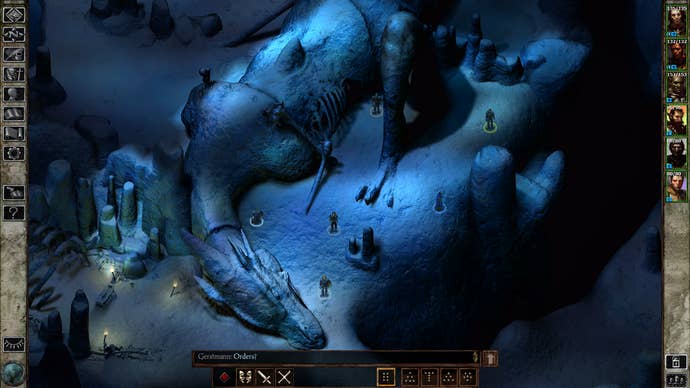
Sawyer and his team didn't finish Icewind Dale in 4 months. They actually finished it in 10 months–still a remarkably short time for an RPG. But the writing was on the wall.
Last Man Standing
It's easy to fool yourself when your company is crumbling all around you, especially when you're young. You see the signs–the resignations, the reduced budgets, the empty offices–but you want to believe that everything will be alright. It's what keeps people coming back until they're either laid off or show up to find themselves locked out.
The dream of Fallout: Van Buren (also known as what would have been Fallout 3) kept much of the staff onboard through the turbulent 2000s. Urquhart was among those who knew the end was near, but nevertheless wanted to see the project through. It was a passion project for the studio: ask any Black Isle alum what their legacy is, and they'll always point to Fallout. Avellone had spent years developing its design, which he imagined as an interesting take on the Prisoner's dilemma. Black Isle had gone as far as designing its own 3D engine for the project. It was to be their magnum opus.
As usual though, events leading up to Van Buren's development were chaotic. Sawyer was working on Baldur's Gate III: The Black Hound, which he had to pause to work on another game that had to come out in a relatively short timeframe. Then Interplay lost the D&D license and the Black Hound was canceled. The studio shifted gears to Van Buren; but by then, Black Isle was hemorrhaging too much talent. As conditions worsened, the talent most closely associated with Black Isle began to drift away.
Brian Fargo resigned from Interplay in early 2002. Urquhart followed in early 2003, and Avellone joined him a couple months later. For Avellone, the final straw was the cancellation of The Black Hound. "When Baldur's Gate III: The Black Hound got canceled [in 2003], I realized we probably wouldn't have many more games left in the studio," says Avellone. "So even though I loved Fallout: Van Buren and had worked on it for years, I knew it would likely follow the same fate as BG3, so I ended up resigning. It was a difficult choice, but it was really the only choice to be made."
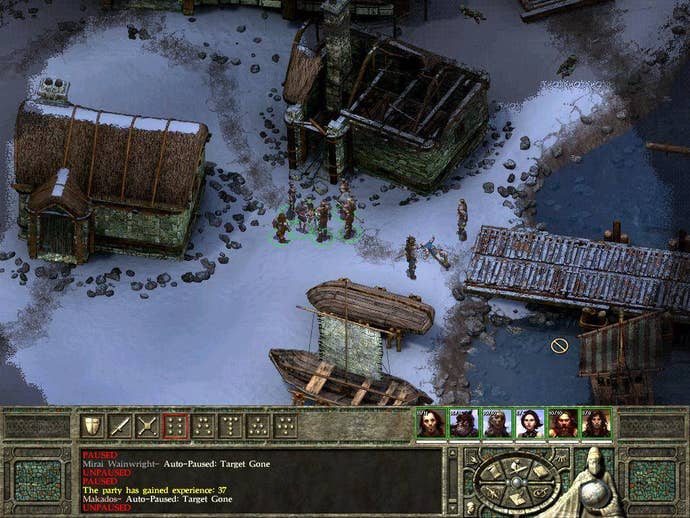
That summer, Avellone teamed up with Urquhart and Interplay alums Chris Parker, Darren Monahan, and Chris Jones to found Obsidian–the team considered by many to be the spiritial successor to Black Isle.
That left Sawyer.
Anyone stuck in a failing company can identify with Sawyer's plight. Plugging along with what he called a skeleton crew, Sawyer did his best, but it was painfully apparent he didn't have the resources he needed to finish the projects put in front of him. "At a certain point I realized that we're never going to get this, like there is a handful of really talented people working their asses off to make the game they've dreamed about making for years and years and years and we're never going to get to finish it."
Together with Tom French, who had taken over as producer on Van Buren, Sawyer tried to get Interplay's upper management interested in the project. He was met with deafening silence. "We were working hard to make something amazing and they never came over and looked at anything. It was really disheartening," he says. "It basically made me think, 'They have either no interest or no care for what we're doing.'"
The end finally came when one of Sawyer's last artists was pulled from his team. "The moment I decided to leave was literally, we had a great character artist on our team, and he was pretty much the only artist we had left. Interplay senior development pulled him over to a non-Black Isle project," says Sawyer. "I'm like, 'Okay, you know what? If you're going to take the only senior character artist off of this project, you have no interest.'"
Sawyer left Black Isle on November 21, 2003. Less than a month later, Interplay pulled the plug. Black Isle Studios was dead. Interplay would try to brand the name a few years later, but it was little more than a name. The talent was long gone; and in any case, the supposed Black Isle revival never went anywhere.

"It was really, really disappointing. I can't say that it was completely heartbreaking because I got to make a bunch of cool games. There are a lot of things I would do differently if I had to make them over again, and they were made kind of under duress," Sawyer says. "But also the people I worked with were great, I learned a lot of stuff, and even though we didn't get to make Fallout 3, we got to play through the tabletop stuff. The process itself was enjoyable. I think what was more disappointing than not getting to work on Fallout 3 was seeing how Black Isle just collapsed over time."
Sawyer would eventually join Avellone, Urquhart, and many other Black Isle refugees at Obsidian, where he was able to help realize the dream of Van Buren with Fallout New Vegas. Obsidian would eventually have problems of its own, but that's another story. Suffice it to say, Obsidian has managed to outlive its predecessor by a considerable margin, and has in recent years managed to build out a niche that didn't exist 15 years ago.
For those who were there, Black Isle remains an indelible part of their lives. Many still have fond memories of the experience, and talk glowingly about the influence the studio had on RPGs. It was a monument to the uncertain nature of the video game business, and a crucible that helped produce some of the best games ever, even if it crushed those who made them.
That its influence is still felt today is a testament to the energy and talent that fed Black Isle's best years. It's been almost 15 years now since Black Isle closed their doors, but its legacy still lives on. Not just with the fans who adored their games, but at Obsidian. Kept alive by those who persevered through the darkest times of Black Isle, and more importantly, the best times.

